Dibaratrir Kabya: Supriya as an Ode to Female Desire
Subscribe to read full article
This section is for paid subscribers only. Our subscription is only $37/- for one full year.
You get unlimited access to all paid section and features on the website with this subscription.
Not ready for a full subscription?
You can access this article for $2, and have it saved to your account for one year.
Madhabi Mukherjee is the only actress to have worked with not only with Satyajit Ray, Ritwik Ghatak and Mrinal Sen, but also legends like Tapan Sinha and Tarun Majumdar. In the justifiable eulogies that films like Baishey Shravana, Mahanagar, Charulata, Kapurush, Subarnarekha and Calcutta 71 have received, her work in Dibaratrir Kabya has somewhat escaped the attention it deserves, despite the National Award it fetched the legendary actor. On her birthday, Shantanu Ray Chaudhuri looks at an overlooked classic of Bengali cinema…
‘Aami meye manush – oto udaar hote chaaina’ – I am a woman … I do not want to be generous. In the light of how leading ladies in popular Indian cinema have generally been represented, particularly if they play the wife, it is quite an extraordinary statement for a woman to make. But then Dibaratrir Kabya (1970) is no ordinary film and its troika of women characters, led by Supriya (Madhabi Mukherjee), make for a fascinating study.
The one aspect that has defined the best of Madhabi Mukherjee’s performances is the interiority that she brings to her characters, which is articulated best in the intensity of her eyes, in the frown that creases her brows, the gaze, more than anything extraordinary about her appearance, drawing in, making the viewer wonder what's going on in her mind. As Andrew Robinson has said: ‘… in Mahanagar [she is] all natural grace and intelligence; in Charulata [she] is so finely tuned that we can enter her every thought and feeling. That, far more than her physical appearance, which can look quite ordinary, is what makes her profoundly beautiful.’ This aspect of the ‘ordinary’ was also echoed by Mrinal Sen when he described her appearance as ‘extraordinarily ordinary’. According to film scholar Chidananada Dasgupta, ‘As the traditional middle-class housewife … Madhabi Mukherjee is the perfect embodiment of the woman torn between self-abnegation and self-respect … Even her looks are of the housewife lost in her chores who has secretly, in her somewhere, all the enticing mystery of woman.’ In the words of Soumitra Chatterjee, ‘Ray’s sense of beauty was more about the flutter of a searching mind than about large eyes and a chiselled face.’
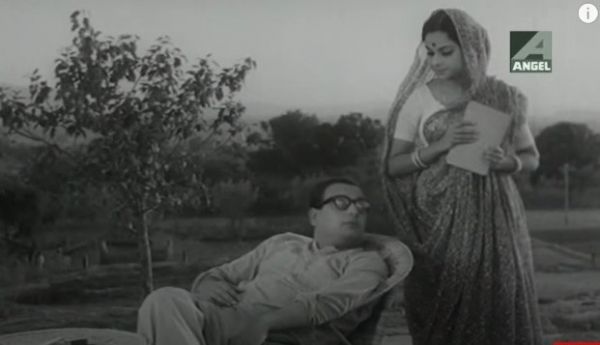
What’s significant about Dibaratrir Kabya is the way it keeps subverting the accepted notions of a woman’s place in family and society through a story driven primarily by the existential crisis of its male protagonist Heramba (Basanta Choudhury). Though others call him a ‘poet’, Heramba insists he is not and that he only ‘teaches bad poems of great poets’. We meet him at the outset through his own voiceover articulating the death of his wife by suicide – ‘Uma is dead … what can I do if someone hangs herself if I speak the truth … we live because there’s no other way … we dream because that’s the only escape we have’. In a monologue that sets up the film and his character, he admits to being devoid of passion, of feelings, that it is he who has killed his wife through his coldness. The monologue ends with Heramba asking himself: ‘Am I sick?’ The film proceeds to explore through his journey if it is he who is sick or is it everyone around him – is this the human condition then that we have to live with?
His first port of call is Supriya who lives in a remote village near Hazaribag. Married to a police officer, Ashok, she is the very picture of domesticity (montages of her everyday chores echoing Charu). However, it is apparent that there’s a history between Heramba and Supriya whose embers still smoulder in her. And she is never at pains to hide it – on the contrary she flaunts her feelings and questions Heramba time and again. It is interesting that Heramba addresses her as ‘tui’ while for her she is always ‘apni’ – which provides another beguiling aspect of the ‘inequal’ nature of their relationship (‘Did you bring me here to be just a wife to a policeman … I have been married six years, why do you treat me like a child still?’ she says, her face a picture of unfulfilled passion.)
Their exchanges are charged with a subtle eroticism in which the idea comes through that, as a commentator wrote about Charu, ‘a woman could rightly want and need more than tending to house and home’. She has no hesitation in approaching Heramba’s bed in the dead of night, seeking an answer regarding her future, even as her husband has passed out after a drinking session with Heramba in the adjoining room. When Heramba chides Supriya for still nurturing the immature notions she had when she was fifteen – one, of being independent after getting an education, and, two, the impossible imagination (which is never spelt out but whose subtext is apparent in the way Supriya looks at Heramba) – she retorts, ‘Why impossible?’, her eyes flashing indignation, her face ready to crumble with pent-up desire.
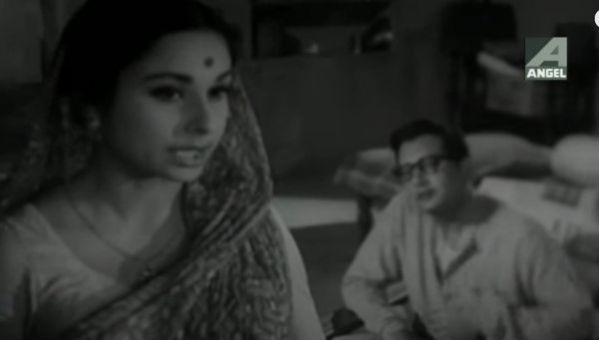
Underlining this subdued passion-play between Heramba and Supriya, to which the husband is a mere onlooker, is the case that the husband is handling: a tribal, Birsa, has murdered his wife because of her infidelity, a killing he admits to with a primeval rage and righteousness. It provides the relationship between Heramba, Supriya and Ashok with a delectable spin even as the two men argue about love, Heramba insisting on its absence, on the ice-cold nature of our existence where we only parrot about love without being capable of feeling any of it, ending with a question that no one has an answer for: why do we keep insisting on love, why can’t we say that we don’t love. The exchange is too much for Supriya, who has been listening in, her face a canvas of flickering emotions in the light of the hurricane lamp, and she passes out (that she is prone to fits has already been referred to – interestingly enough, the author on whose work the film is based, Manik Bandopadhyay, had a history of epileptic fits).
This marks the end of Act One as Heramba moves on. We next see him on the beaches of Puri, where he comes across his old teacher Mastermoshai (Kanu Bandopadhyay – Harihar of Pather Panchali fame). This introduces us to two other characters who drive the film’s narrative in important ways: Mastermoshai’s wife Malati and their daughter Ananda. Though the teacher is now beset with a strange lassitude, it turns out that his youth had been one of passion, in the throes of which he had run away with and married one of his students, Malati (Anubha Gupta, in another of the film’s notable performances). Nothing remains of that now as he asks Heramba: How does man live devoid of shackles?

Soon enough, Heramba and Ananda (Anjana Bhowmik, the third of the telling female acts in the film), an aspiring dancer, enter into a relationship, one that is more openly sensual than Heramba’s with Supriya, symbolized by the erotic sculptures of Konark which form the backdrop to an allusive dance sequence. There is something about Heramba that makes him attractive to women despite his lack of emotions and his propensity for indifference as soon as a relationship begins to build, which is true even for his bond with Ananda. As she senses a certain cooling off on his part, he rationalizes: ‘Would love have any value if it lingered … flowers bloom only to wither, do we grieve for them?’
Meanwhile, Supriya arrives in Puri and before long Heramba and Ananda run into her. The meeting is fraught as Supriya knows instinctively that there’s something brewing between Heramba and Ananda, and the stage is set for a classic confrontation between the two women vying for the affection of someone who has probably already moved on.
This segment yet again provides an insight into how different Supriya is from the run-of-the-mill ‘good’ wife we are accustomed to in our films. Though she is in Puri with her husband who is recuperating from an illness, Supriya has no qualms in abandoning him to go on outings with Heramba. In fact she tells Heramba: ‘It’s not child’s play to be with someone, attend to someone twenty-four hours … is love and affection the same thing?’ Instead of nursing her sick husband, Supriya seems more concerned about winning back Heramba from Ananda. And is more than a tad relieved when her husband’s relatives arrive – she can leave him to their care now without having to worry. The nonchalance with which Madhabi imbues the desires that haunt Supriya, the honesty she brings to what she seeks, renders any judgement about the character immaterial. She creates her own agency, and provides her character with a dignity and depth that the object of her affection does not have the wherewithal to fathom.
The next morning, Heramba emerges from the sea to find Supriya at the beach in widow’s white. As the waves wash over the shore, the realization dawns on Supriya that Heramba is incapable of love, and the film leaves the viewer with her question to Heramba: Can you tell me what do I do now?
Looking at it almost fifty years after it was made, I cannot help but wonder how ahead of its time Dibaratrir Kabya was. None of the characters in the film are apologetic about the choices they make, and these are incredible choices, even by today's standards. What the film lacks in terms of the visual innovativeness that Bengali cinema of the era had come to embody in the works of Ray, Ghatak and Sen, it more than makes up for with the honesty of the narrative – which is not surprising given that it is based on a novel by Manik Bandopadhyay, known for his unflinching take on the human condition (other films inspired by his works include a segment in Mrinal Sen’s Calcutta 71, Nabyendu Chatterjee’s Sarisreep and Goutam Ghose’s Padma Nadir Majhi). Amazingly enough, the novel it is based on was written in 1936, one of the master storyteller’s earliest works. Above all, in Madhabi Mukherjee’s delineation of the yearnings that impel Supriya, we have one of the great characters of Bengali cinema. About Emma’s character in Madame Bovary, it has been said, ‘Emma’s drama is the gap between illusion and reality, the distance between desire and its fulfilment’ and shows ‘the first signs of alienation that will take hold of men and women in industrial societies’. That rings true for Supriya too.
• Directed by: Bimal Bhowmik and Narayan Chakraborty
• Screenplay: Bimal Bhowmik, based on the novel by Manik Bandopadhyay
• Cinematographer: Krishna Chakraborty
• Music: Timir Baran
• Edited by: Santosh Ganguly
• National Film Award for Second Best Feature Film (Bhuvan Shome won the Best Film Award)
• National Film Award for Best Actress
Tags
About the Author
Shantanu Ray Chaudhuri is either an 'accidental' editor who strayed into publishing from a career in finance and accounts or an 'accidental' finance person who found his calling in publishing. He studied commerce and after about a decade in finance and accounts, he left it for good. He did a course in film, television and journalism from the Xavier's Institute of Mass Communication, Mumbai, after which he launched a film magazine of his own called Lights Camera Action. As executive editor at HarperCollins Publishers India, he helped launch what came to be regarded as the go-to cinema, music and culture list in Indian publishing. Books commissioned and edited by him have won the National Award for Best Book on Cinema and the MAMI (Mumbai Academy of Moving Images) Award for Best Writing on Cinema. He also commissioned and edited some of India's leading authors like Gulzar, Manu Joseph, Kiran Nagarkar, Arun Shourie and worked out co-pub arrangements with the Society for the Preservation of Satyajit Ray Archives, apart from publishing a number of first-time authors in cinema whose books went on to become best-sellers. In 2017, he was named Editor of the Year by the apex publishing body, Publishing Next. He has been a regular contributor to Anupama Chopra's online magazine Film Companion. He is also a published author, with two books to his credit: Whims – A Book of Poems (published by Writers Workshop) and Icons from Bollywood (published by Penguin Books).



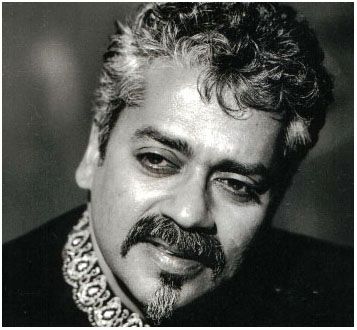
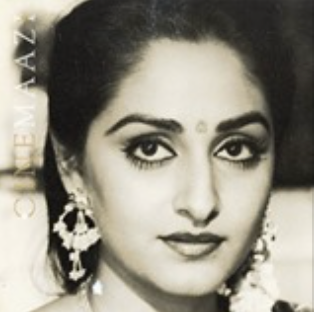

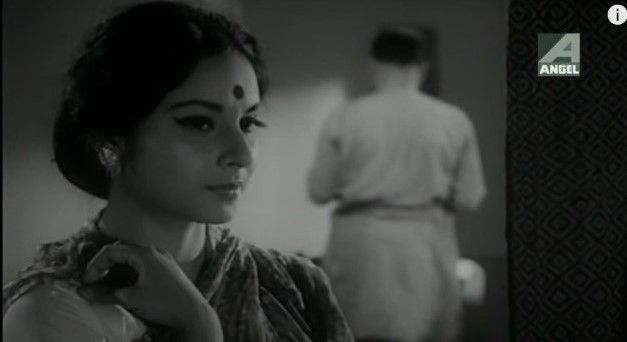
.jpg)


